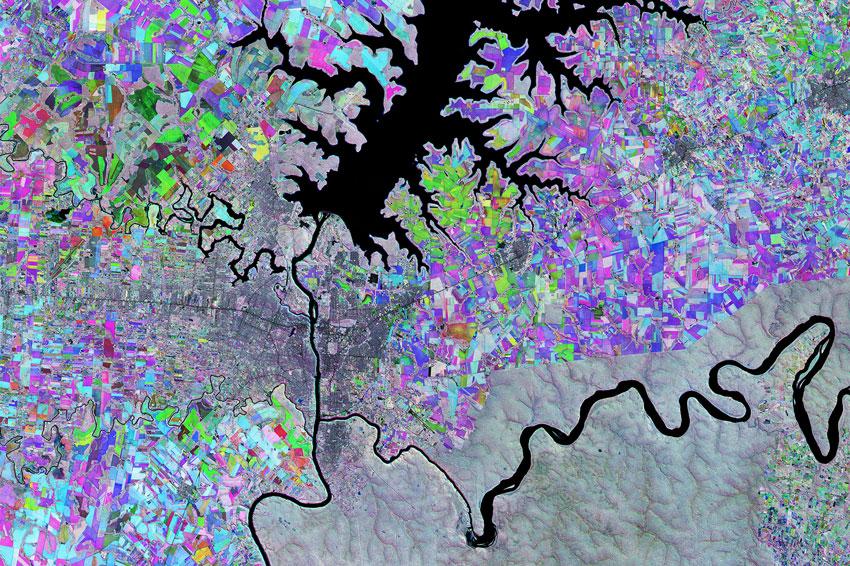Lynred designs advanced multispectral infrared detector for ESA
06.08.2024 - New hi-res imaging device to meet European Space Agency’s requirements for improved performance in next-generation satellite mission for land monitoring and emergency management.
Lynred, a provider of high-quality infrared detectors for the aerospace, defense and commercial markets, was selected earlier this year in an open bidding process, to develop an advanced multispectral infrared detector for the Sentinel-2 Next-Generation (NG) land monitoring satellite mission; the continuation of the Sentinel-2 mission. Both missions are led by the European Space Agency (ESA), within the framework of the European Commission Copernicus NG program.
Multispectral imagery is used to discern land surface features and landscape patterns; the data it generates serves farming and forestry, as well as climate and disaster protection. Lynred is contracted for the pre-development of Phase A/B1 of the next-generation project. It will design a multispectral infrared detector, a complex high-resolution imaging device, to meet Sentinel-2 NG’s requirements for improved performance at the system level to achieve a higher level of survey accuracy. These parameters include shortening the ground sample distance and adding new spectral bands. The first prototype is due in 2026.
“Sentinel-2 NG is a challenging and exciting project. Lynred is very proud to have been selected to participate in the development of the new generation of satellites for this extraordinary land monitoring mission,” said Philippe Chorier, space business development manager at Lynred. “Our long track record in space missions is testimony to the unfailing performance of our infrared detectors in extreme conditions and in our ability to fulfill the stringent criteria of space agencies.”
Lynred has already developed and manufactured infrared detectors for the Sentinel-2 mission, with satellites Sentinel 2A and 2B launched in 2015 and 2017 respectively and 2C and 2D, expected to launch in the near future.
At the beginning of the next decade, the Sentinel-2 Next Generation (NG) mission will replace the current generation in operation. Its aim is to provide continuity in monitoring plant growth and map changes in land cover and in monitoring the world’s forests beyond 2030. The program will introduce several performance enhancements, notably through better land surface resolution (current Sentinel-2 resolution = 10 m / 20 m respectively in visible and infrared spectral ranges. Target Sentinel-2 NG resolution = 5 m / 10 m, respectively).
In parallel with the challenge of designing a new high-end multispectral IR detector with increased performance requirements for the pre-development phase, Lynred must also address the industrial process to manufacture these detectors in volume quantities.
“Whereas in the previous Sentinel-2 mission, Lynred delivered tens of flight models over several years, Sentinel-2 NG has heightened the industrial stakes, requiring the delivery of more units within half the time. With our industrial capacity and experience, Lynred is well equipped to deliver at an accelerated mode,” added Chorier.
Lynred’s multispectral IR detector for Sentinel-2 NG will consist of five or six detection lines. Each line has a format of around 2,000 pixels at a 15-micron pitch (meaning a detector of about 3 cm long for each spectral line). The project covers the design of the entire detector to include the readout integrated circuit (ROIC), the detection circuit based on Mercury Cadmium Telluride, a semiconductor material that will be hybridized to the ROIC to produce the infrared detector. It also includes the design of space-grade packaging to fit the infrared detector into the S2 NG satellite payload.
Contact
Lynred
364 Avenue de Valence, Actipole CS 10021
38113 Veurey-Voroize
France
+33 476 28-7700






